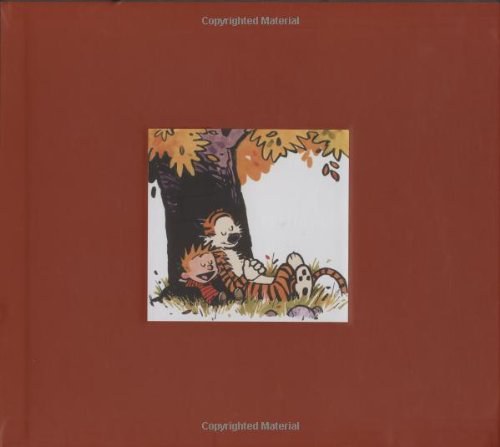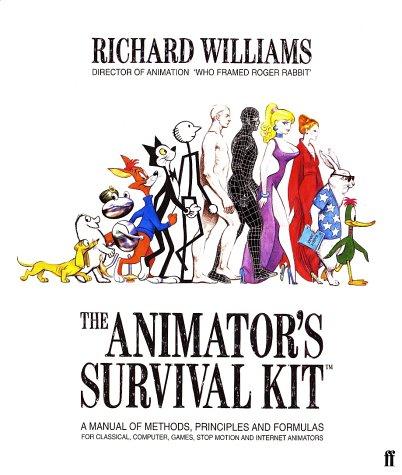
董春方《高密度建筑学》
书刊介绍
内容简介
这是一本有关城市高密度与建筑学观念及方法论的文本。
本书以城市高密度为环境条件与预设,论述因高密度而激发的建筑学方法。
内容分为上、下篇两大部分,上篇是背景和基础研究,下篇是经验的总结归纳与方法策略的提取及论述。
第一章从宏观层面论述了高密度建筑学的背景研究——紧缩城市与城市高密度环境。通过大量的数据和理论梳理,从人口、社会、经济、生态环境和城市演进等方面,论述了人类空间诉求的紧迫性和人口膨胀动力、城市化动力、生存条件与环境改善动力、生态补偿动力等因素。阐明人类需要空间的事实,并深入阐述了人类生存与繁衍所需空间与有限空间之间的尖锐矛盾。继而陈述了城市作为人类生存与发展的重要介质是满足空间诉求的切要。以此为依据,再通过中观层面描述城市高密度环境状态;阐述了城市高密度存在的必然性和历史性、对城市多样性与繁荣的价值,以及对可持续发展的积极意义。
第二章分析论述了密度与高密度的含义,并作为基础性内容为后续章节高密度建筑学方法策略的论述提供理论铺垫和技术支持。本章通过基本的数值量度和复合的人类感知概念,以物理密度、感觉密度和高密度三方面解释了密度的多种含义和量度方法。陈述了确定清晰物理密度量度的精确定义和方法,并进一步指出需要将多种密度指标结合成一种整体性的评价方法,用于评价、描述与预测建筑与城市形态、城市环境的关系,以及所呈现的密度状态。最后明确界定了城市高密度的内容和范围,厘清了高密度与城市高密度环境的含义和所指,并寻找发现其中的特征和潜能、存在问题和关联因素,从而为存在于之中的建筑应对策略与方法提供针对性依据。
第三章以时间为线索回顾了自20世纪初到21世纪近百年的基于城市高密度环境条件的建筑应变、实践与发展的历史。解析由城市高密度环境而激发的应对高密度的建筑理想、概念和理念,以及从探索、试验到实践的经验。将近百年的针对城市高密度环境的建筑应变与实践的历史分成三个时间阶段,分别为20世纪初至40年代的初始阶段、50年代至80年代的发展阶段以及90年代至21世纪初的成熟阶段。以密度的视角聚焦、独特地解析其中不同的建筑探索和实践所隐含的策略与应变方法,将从中总结归纳的经验作为第四章高密度建筑学策略的摹本与素材。
第四章在分析、归纳和总结第三章建筑应变与实践的经验基础上,利用第一章背景研究的成果和结论并结合第二章密度的基础技术和理论,展开针对城市高密度环境的建筑学策略的论述,也是高密度建筑学的主要观点。在解释了这种特定环境状态下的建筑学策略的含义和内容之后,提取并归纳高密度建筑学六大策略——多样性原则、亲近性原则、空中空间利用模式、三维立体模式、杂交与共生和空间补偿,并逐一展开深入剖析和论述。
最后本书对所提出的高密度建筑学策略的因果关系和逻辑结构作出总结。作为结论,指出通过高密度建筑学六大策略,以建筑为本,挖掘建筑构成中被密度所激发的潜能和特质,提升建筑空间的质和量并共生于高密度城市环境,最终构建协调发展的城市高密度环境。
关键词: 高密度,建筑学,多样性,亲近性,空中空间利用,三维立体,杂交与共生,空间补偿
This is a discourse of architecture methodology to urban high density.
Taking urban high density surroundings as precondition, the book discusses and elaborates the architecture strategies induced by high density. It is neither the intention for the text to interpret the specific aesthetics of buildings generated from high density nor to be a role taken to state aesthetics. But to search and study the responsiveness and solution of architecture from high density at the viewpoint of architecture while confronting the vital moment of how to develop cities, as well as to find out the architecture strategies to defuse problems produced by urban developing.
The book consists of two sections, the first of which is to study the background and basis of the text while the second section is about the collecting and summarizing of experiences along side with the demonstration for refinement of strategies.
Chapter one discusses the background of the subject on the macro lever, which is about compact city and urban high density surroundings as the precondition of the research subject. It analyzes the urgency of space need appealed by human being, ranging from efficient cause of population explosion, urbanization, improvement aspiration intensely of existence condition and surroundings to ecological compensation, by a large amount of statistics and classification of relevant theories. It not only clarifies the fact of the space need and the contradiction between the limited space and both existence and development of human being as well. Then it demonstrates that cities are the only option to satisfy the space appeal, when taking them as the medium for human being's existence and development. Afterwards it points out that both space appeal and limited space become the justification to support the value of compact city idea. After that, it states the condition of urban high density surroundings by medium perspective, expounds the necessity and historic significance of urban high density, which is the value to urban diversity and prosperousness, and is of the positive significance to the idea of sustainable development.
Chapter two analyzes and expounds the meanings of density and high density in the way from abstract to concreteness by both medium and micro perspectives, which is taken as the basic content of this subject, simultaneously as the technical support and evidence for the following strategies' discussion. It searches and explains the meanings and measure of density according to physical density, perceptive density and high density in the light of both basic numerical measure and the conception of mutual perception. It elaborates the accurate definitions and methods of physical density measurements. Further more it also points out the necessity to evaluate, describe and predict the relation between architecture and both of urban morphology and surroundings, as well as the emerging density status. Finally, this chapter defines the content and scope of urban high density, clarifies the meaning and signified both of high density and its surroundings. Then it searches and finds out the characteristic, potency, contained problems and related elements of urban high density, so that to discover the pertinent evidences for responsive strategies of architecture in urban high density.
Chapter three reviews the history of responsiveness, practice and evolvement of architecture from the beginning of 20 century to present in 21 century upon urban high density surroundings. It analyzes not only the thought, conception and idea of responsive architecture simulated by urban high density surroundings, and the experiences of its searching, experiment and practicing as well, which are taken as the historic content and practical experience of this subject. The history of practice consists of three stages, which are the initial stage from 1900s to 1940s, the developing stage from 1950s to 1980s and the mature stage from 1990s to present in 21 century. It uniquely analyzes the implicated responsiveness and strategies from differentiated researches and practices of architecture focused by view of density. Then it takes the results as the transcription and source for the following chapter that is about the strategies of architecture to urban high density surroundings.
Chapter four elaborates and discusses the architecture strategies to urban high density surroundings based upon the analysis, experiences and results of chapter three, by utilizing the achievements and conclusions of the background study in chapter one along with the basic technologies and theories of density in chapter two. Once interpreting the meaning and essence of the strategies in such specific surroundings, it refines and concludes the six architecture strategies induced from high density, which consists of diversity principle, proximity principle, model of space usage in the air, 3D model, hybrid and coexistence, and space compensation. Each of them is analyzed and discussed deeply one by one.
Ultimately this text gives the conclusions that include the cause and effect of the architecture strategies, and its logic structure as well. As the final conclusion the text declares that the six strategies are of revealing potencies and specialties consisted in architecture stimulated from density, to promote the quantities and qualities of architectural space that coexist coordinately in urban high density surroundings, for the purpose of towards the fine livable urban high density surroundings.
Moreover, this paper summarizes the significance of the strategies to creative ability for architecture, which would be a new research subject for the future.
Key Words: high density, architecture,
diversity, proximity, space usage in the air, 3D, hybrid and coexistence, space compensation
作品目录
摘要
绪论
上篇 背景与基础
第一章 紧缩城市与城市高密度环境
摘要
1.1 空间诉求的紧迫性及动力因
1.1.1 空间诉求的紧迫性
1.1.2 空间诉求的人口膨胀动力因
1.1.3 空间诉求的城市化动力因
1.1.4 空间诉求的生存条件与环境改善动力因
1.1.5 空间诉求的生态补偿动力因
1.2 密集紧缩城市与城市高密度环境的价值
1.2.1 紧缩还是分散
1.2.2 密集紧缩城市的价值
1.2.3 城市高密度环境
1.2.4 城市高密度环境的优势和多样性价值
结语
第二章 密度与高密度
摘要
2.1 物理密度
2.1.1 人口密度的量度方法
2.1.2 建筑密度的量度方法
2.1.3 密度梯度与密度分布
2.1.4 建筑密度与城市形态
2.2 感觉密度
2.2.1 空间密度和社会密度
2.2.2 感觉密度与建筑特征
2.3 高密度与城市高密度环境
2.3.1 高密度含义的主观性和模糊性
2.3.2 基于城市环境和城市形态的高密度内容
2.3.3 城市高密度环境的界定
2.3.4 城市高密度环境与拥挤
结语
下篇 经验与策略
第三章 高密度.建筑应变与实践
摘要
3.1 高密度.建筑应变与实践的背景和内容
3.2 建筑应变与实践的初始阶段
——未来都市与建筑的构想,1900s-1940s
3.2.1 摩天大楼的启示
3.2.2 整体都市主义策略的初探
3.2.3 三维立体模式及空间补偿策略的初探
3.2.4 杂交与共生策略的初探
3.3 建筑应变与实践的发展阶段
——应变策略的成形与广泛实践,1950s-1980s
3.3.1 空间补偿及杂交与共生策略的探索与实践
3.3.2 “空间城市”的启示
3.3.3 几何形体的高密度价值
3.3.4 垂直都市主义及杂交与共生策略的实践与发展
3.3.5 三维立体模式及其叠加模块的探索与实践
3.3.6 广泛的现实性实践与发展
3.4 建筑应变与实践的成熟阶段
——应变策略的回归、成熟与发展,1990s-2000s
3.4.1 走向更高的垂直城市
3.4.2 走向成熟的现实性巨构建筑
3.5 百年高密度.建筑应变与实践建筑师与案例列表
结语
第四章 高密度建筑学策略
摘要
4.1 高密度建筑学策略的含义
4.2 高密度建筑学策略的内容
4.3 多样性原则
4.4 亲近性原则
4.5 空中空间利用模式
4.5.1 空中空间利用的必然性
4.5.2 空中的空间诉求
4.5.3 空中空间利用模式的回归
4.5.4 空中空间利用模式的经验
4.6 三维立体模式——垂直都市主义
4.6.1 三维立体模式的环境因素
4.6.2 三维立体模式的价值和意义
4.6.3 三维立体模式的经验
4.6.4 叠加模式
4.6.5 悬挑模式
4.6.6 漂浮模式
4.6.7 建筑基面三维连续立体化
4.6.8 建筑公共空间与城市公共空间的三维接驳
4.6.9 地下空间的开拓
4.7 杂交与共生——整体都市主义
4.7.1 杂交与共生的类型学意义
4.7.2 杂交与共生的生存策略意义
4.7.3 杂交与共生的演进和经验
4.7.4 杂交与共生的效能和特征
4.7.5 杂交建筑
4.8 空间补偿
4.8.1 空间补偿的环境因素
4.8.2 空间补偿的价值和意义
4.8.3 空间补偿的具体手段
结语
结论
主要参考文献
图片资料来源
相关推荐
-

天堂电影院:52部美丽电影阅读笔记:reading notes of 52 brilliant movies
天堂电影院:52部美丽电影阅读笔记:reading notes of 52 brilliant movies 本书特色 《天堂电影院:52部美丽电影阅读笔记》是...
-

琴棋书画趣话
琴棋书画趣话 本书特色许明甲的《琴棋书画趣话》:中国传统艺术浩如烟海,博大精深,但*为人们推崇的奠如琴棋书画。人们喜爱它们,井乐于实践,称它们为“四绝”。琴是我...
-

成语故事
《成语故事》内容简介:成语这一文化的“活化石”,历经千年的锤炼与传承,至今仍被广泛运用在日常生活的口语以及行文中。本书各篇
-

极简投资法(第2版)
《极简投资法(第2版)》内容简介:为了帮助希望利用财务指标进行价值投资的读者,本书从上百种财务指标中,抽出11种基础指标,按照
-

刘瑞《汉长安城的朝向、轴线与南郊礼制建筑》
刘瑞编著的《汉长安城的朝向、轴线与南郊礼制建筑》通过对考古资料、文献记载的整理与分析,提出西汉早中期汉长安城是一座朝东城
-

甲骨文同字异形字帖
甲骨文同字异形字帖 内容简介 《甲骨文同字异形字帖》作者王本兴使用扫描仪、数码照相机、电脑、复印机等现代电子设备,将微小的拓片文字放大,将其整理归纳、影印成《甲...
-

(精)小楷名品
(精)小楷名品 本书特色 ★ 16开精装,线装书局出版★ 全书涵盖钟繇、二王、虞世南、欧阳询、褚遂良、钟绍京、颜真卿、米芾、苏轼、黄庭坚、赵孟頫、祝允明、王宠、...
-

松风阁诗卷 寒山子庞居士诗卷
松风阁诗卷 寒山子庞居士诗卷 本书特色 北宋著名文学家、书法家。与张耒、晁补之、秦观都出于苏轼门下,合称为『苏门四学士』。他的诗与苏轼并称『苏黄』,为盛极一时的...
-

齐如山戏本
齐如山戏本 本书特色 《齐如山戏本》:封面图注:京胡。京戏在形成中,胡琴成为文场伴奏的主乐器,遂定名为“京胡”。其音箱为竹筒,琴杆、琴弓用竹竿。琴筒细长,前端蒙...
-

儿童青少年教育心理学
《儿童青少年教育心理学》内容简介:厌学是当今儿童和青少年在成长过程中,遇到的最突出的问题之一,也是家长和老师最头痛的问题之
-

《建筑学的教科书》书籍《建筑学的教科书》
目录序:教科书中所没有的另一个版本第1课 上午课邂逅建筑 摇摆的心建筑是美丽的 技术和艺术的融合联结建筑 人类智慧的结晶—
-

历法、宗教与皇权:明清之际中西历法之争再研究
《历法、宗教与皇权:明清之际中西历法之争再研究》内容简介:本书就是作者尝试以多元角度对这段历史进行解读的结果。本书的主题,
-

田英章硬笔楷书技法-(配光盘)
田英章硬笔楷书技法-(配光盘) 内容简介 硬笔书法是指用硬质笔尖的“工具”书写汉字的一种艺术形式,并包括一定的书写规则。硬笔是指除毛笔之类软笔外的书写笔...
-

一幅画的诞生
一幅画的诞生 本书特色 《一幅画的诞生》:在艺术与批评之间,无疑存有一场心智的对弈。一幅画的诞生 内容简介 本书探讨中国当代先锋画家张晓刚、岳敏君、徐累、刘野、...
-

废墟的故事
《废墟的故事》内容简介:寒烟衰草,古木遥岑,丰碑特立,四无行迹,观此使人有古今之感。以木结构为基础的建筑形态造就了中国古代
-

十字街头
十字街头 本书特色 刘凤禄主编的《十字街头》介绍了,在动乱的年代下,数万年轻人被抛在了人生的十字路口,事业、爱情、理想,如此等等,都成为他们不得不去面对与抉择的...
-

2015-珠宝翡翠-拍卖年鉴-全彩版
2015-珠宝翡翠-拍卖年鉴-全彩版 本书特色内容介绍 《2015古董拍卖年鉴》我社连续第15年出版,该书已是收藏拍卖行业*有影响的工具性图录。以往分瓷器...
-

艺术的故事
艺术的故事 本书特色 《艺术的故事》是有关艺术的书籍中*著名、*流行的著作。它概括地叙述了从*早的洞窟绘画到当今的实验艺术的发展历程,出版后0多年来,一直是这一...
-

广告企划的艺术
作品目录广告业界的新族群――AP译者序导言 徒劳之举第一章 没给老鼠留空间第二章 沉默的搭档第三章 问道于盲第四章 剥洋葱皮第
-

《赵孟頫胆巴碑》-毛笔速成30天基本笔画与间架结构
《赵孟頫胆巴碑》-毛笔速成30天基本笔画与间架结构 内容简介 从古至今,凡学书者,都离不开“基本笔画”和偏旁部首。其实学书基础部分也就这两件事。 笔画如盖房...





